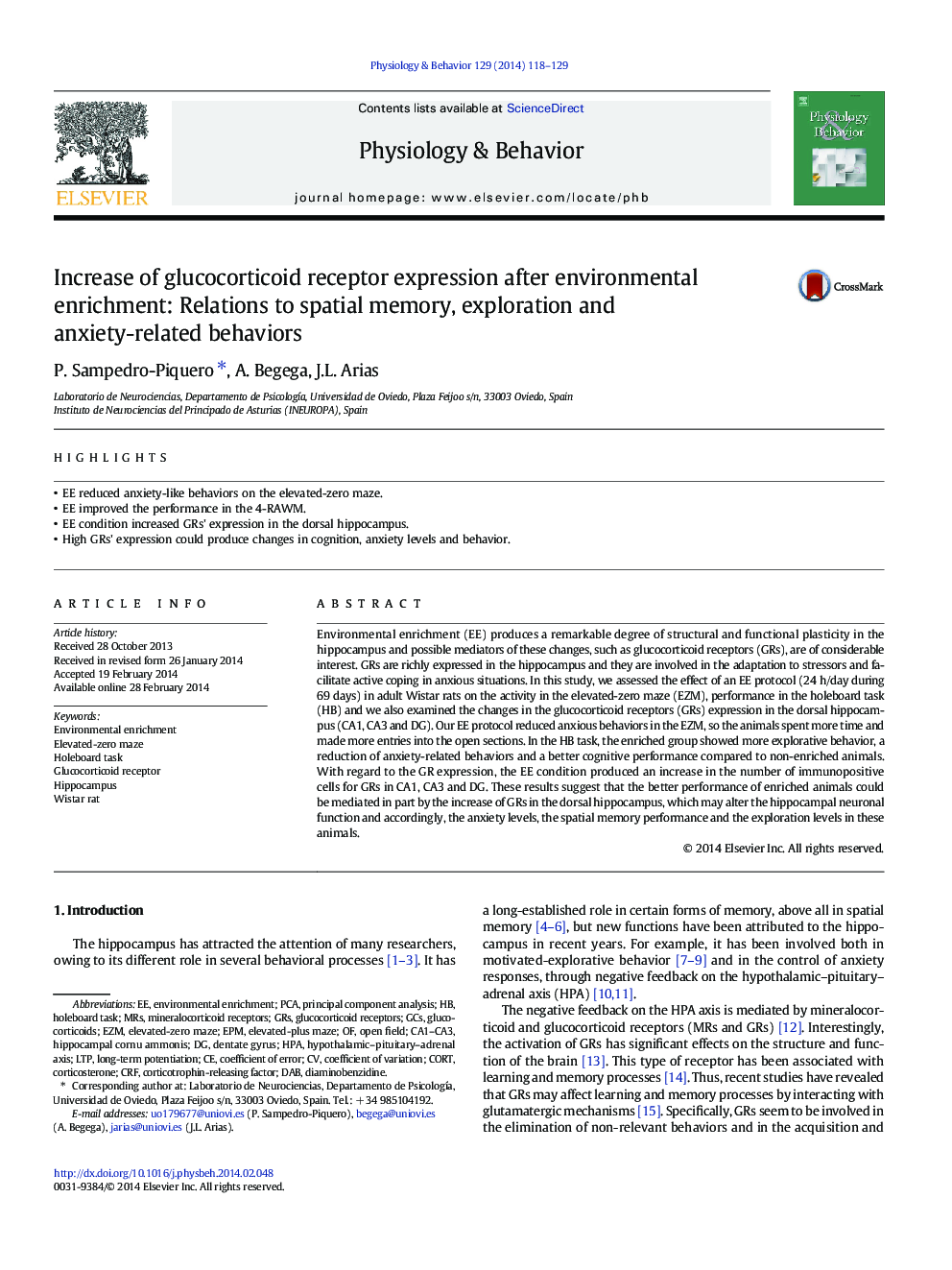| Article ID | Journal | Published Year | Pages | File Type |
|---|---|---|---|---|
| 5924272 | Physiology & Behavior | 2014 | 12 Pages |
Abstract
Environmental enrichment (EE) produces a remarkable degree of structural and functional plasticity in the hippocampus and possible mediators of these changes, such as glucocorticoid receptors (GRs), are of considerable interest. GRs are richly expressed in the hippocampus and they are involved in the adaptation to stressors and facilitate active coping in anxious situations. In this study, we assessed the effect of an EE protocol (24Â h/day during 69Â days) in adult Wistar rats on the activity in the elevated-zero maze (EZM), performance in the holeboard task (HB) and we also examined the changes in the glucocorticoid receptors (GRs) expression in the dorsal hippocampus (CA1, CA3 and DG). Our EE protocol reduced anxious behaviors in the EZM, so the animals spent more time and made more entries into the open sections. In the HB task, the enriched group showed more explorative behavior, a reduction of anxiety-related behaviors and a better cognitive performance compared to non-enriched animals. With regard to the GR expression, the EE condition produced an increase in the number of immunopositive cells for GRs in CA1, CA3 and DG. These results suggest that the better performance of enriched animals could be mediated in part by the increase of GRs in the dorsal hippocampus, which may alter the hippocampal neuronal function and accordingly, the anxiety levels, the spatial memory performance and the exploration levels in these animals.
Keywords
DABCA1–CA3EZMGRsGCsCRFEPMMRSPCAPrincipal component analysislong-term potentiationLTPdiaminobenzidinedentate gyrusCoefficient of Variationcoefficient of errorEnvironmental enrichmenthypothalamic–pituitary–adrenal axisWistar ratOpen fieldHPAHippocampuselevated-plus mazeCORTcorticotrophin-releasing factorCorticosteroneGlucocorticoidsMineralocorticoid receptorsglucocorticoid receptorsglucocorticoid receptor
Related Topics
Life Sciences
Biochemistry, Genetics and Molecular Biology
Physiology
Authors
P. Sampedro-Piquero, A. Begega, J.L. Arias,
